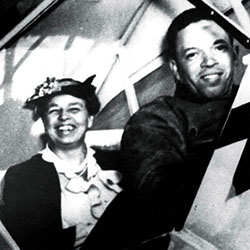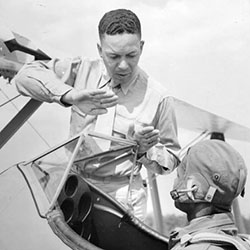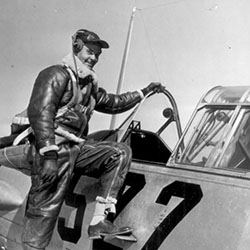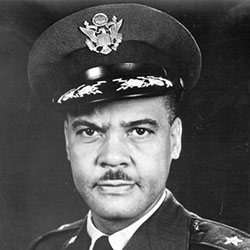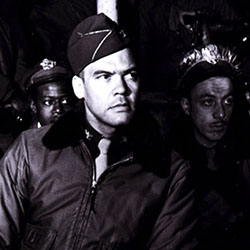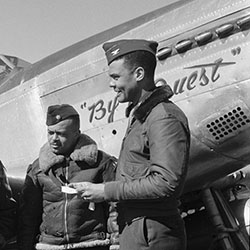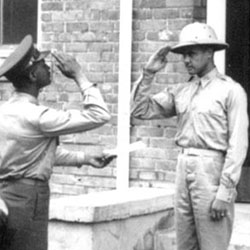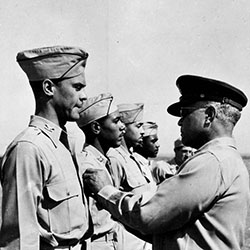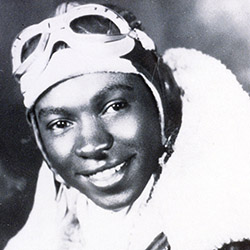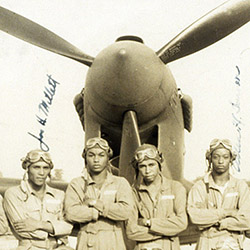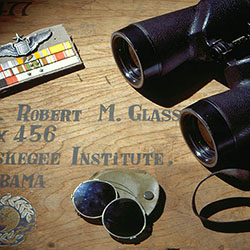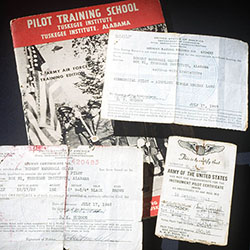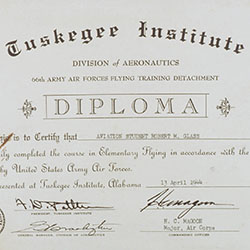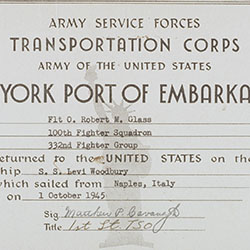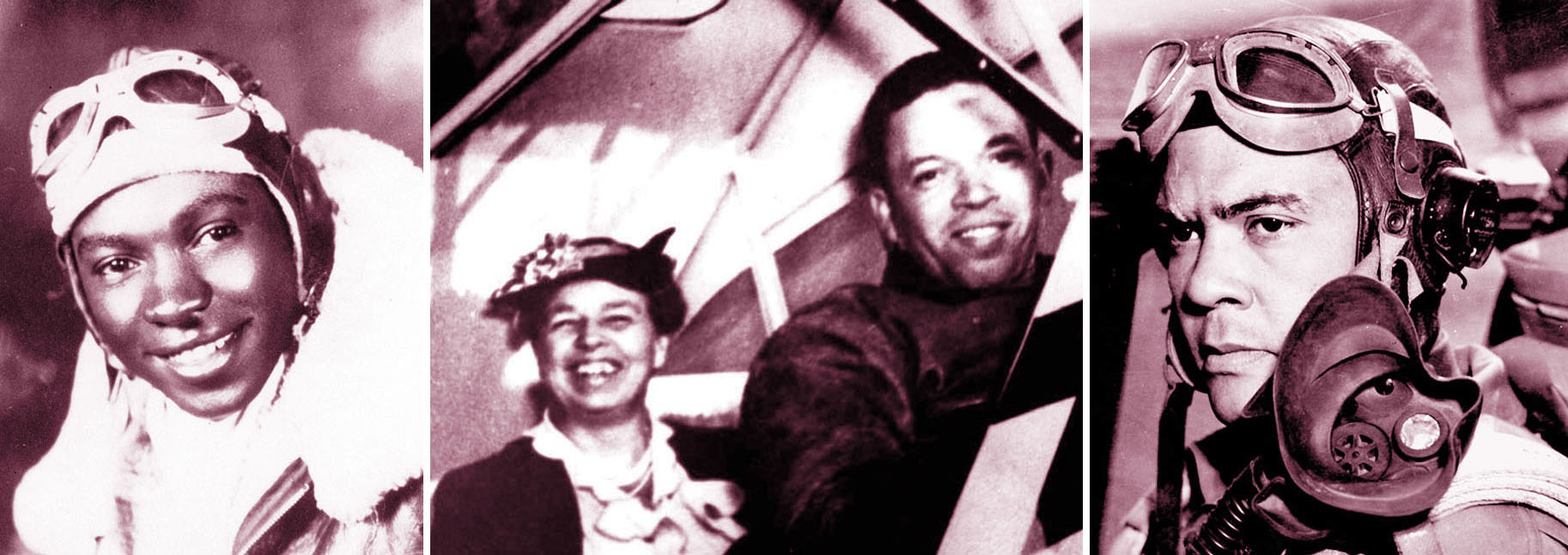
Featured Individuals
Charles "Chief" Anderson
Known as "Chief" Anderson by the pilots he trained, Charles Alfred Anderson was a pioneer of African-American aviation. A commercial pilot, he and Dr. Albert E. Forsythe were the first African Americans to fly a transcontinental trip from Atlantic City to Los Angeles and back in 1933. The two later flew a goodwill flight to Cuba, Jamaica, Haiti, and six other Caribbean countries in their plane named The Spirit of Booker T. Washington.
Anderson taught civilian pilot training courses at Howard University, Washington, D.C. In 1940, he joined the faculty at Tuskegee Institute as head of the Civilian Pilot Training (CPT) program.
Chief Anderson gave Eleanor Roosevelt a plane ride when she visited Tuskegee in 1941. She was determined to counter the view that African Americans couldn't fly. Their photograph was seen all over the U.S. Mrs. Roosevelt's plane ride gave an enormous boost to black aviation.
The success of the CPT under Anderson's leadership was a major factor in the Army Air Corps decision to establish a primary training program at Tuskegee. As chief flight instructor at Tuskegee, Chief Anderson supervised primary flight training for 1,000 African-American pilots at Moton Field.
An Airman's Story: Robert M. Glass
Robert Marshall GlassDecember 17, 1920 - January 24, 1955
Already a qualified pilot, Robert Marshall Glass was one of the highly skilled and committed young men to join the 332nd Fighter Group in Tuskegee, Alabama.
Glass was born in Pittsburgh, Pennsylvania and graduated from Carnegie Institute of Technology with a degree in mechanical engineering. He signed up at Tuskegee Army Air Field on January 28, 1943, and attended cadet school at Tuskegee. Charles "Chief" Anderson was one of his flying instructors at Tuskegee. Benjamin O. Davis, Jr., was his commanding officer.
Glass served his country in World War II and during the Korean War. Highly decorated, he was awarded the Distinguished Flying Cross, Air Medal, EAME Campaign medal, American Campaign Medal, Distinguished Unit Citation and the National Defense Service medal. His last duty station was at Wright Air Development Center, Wright-Patterson Air Force Base. At the time of his death, Captain Glass was at the Air Command Staff School, Maxwell Air Force Base. His name is inscribed on the Memorial Honor Roll of the Air Force, Air Force Aid Society, Washington, D.C.

